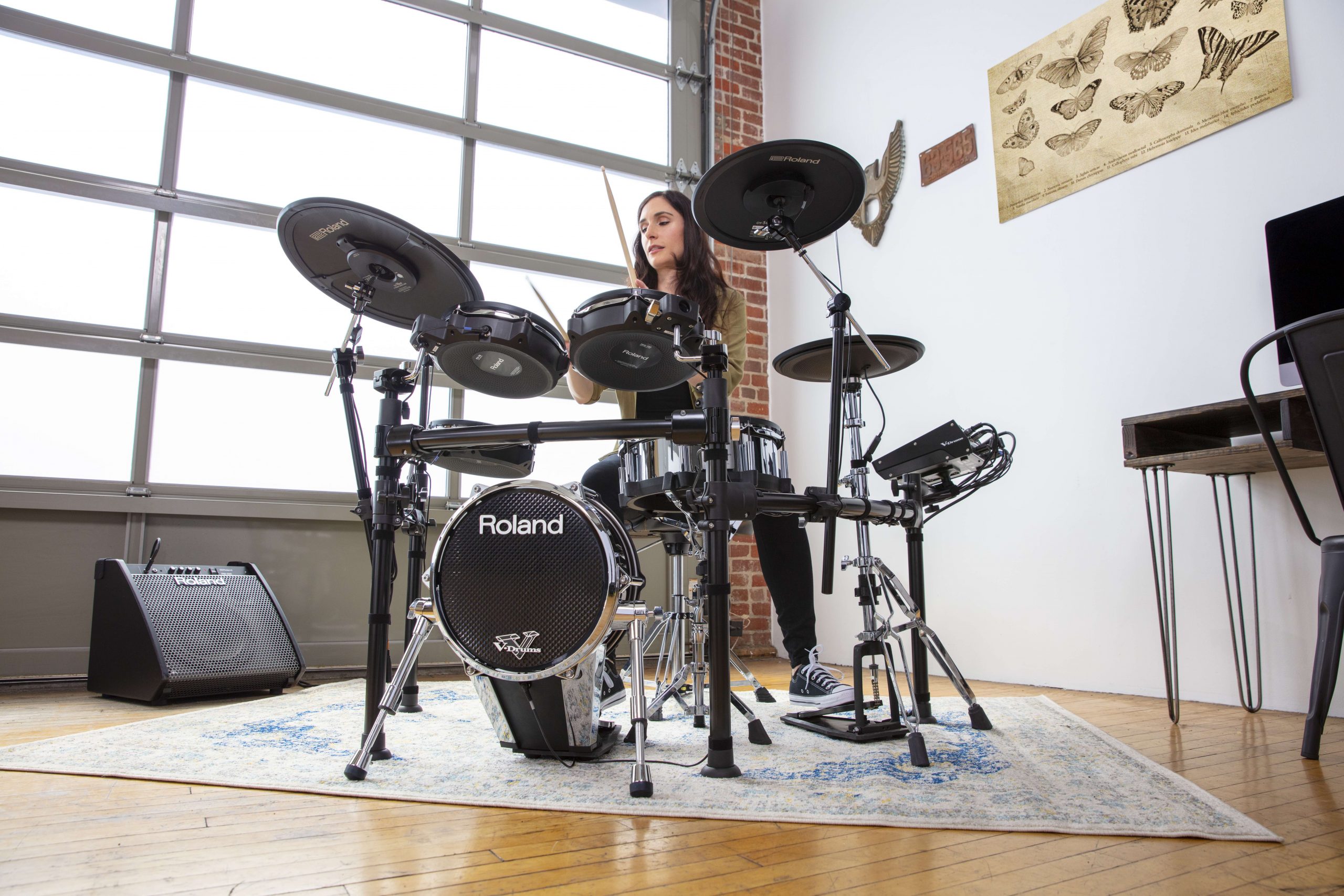Every new learning experience is a bit scary, and learning drums is no exception. It combines a physical feat with creative expression. That’s tough stuff. Take a step back. Make learning easy and fun with just a little time and effort. Gather some motivation, get into a practice routine, and stay patient. With time comes progress, and with progress comes a priceless reward.
Identify Your Goals
It’s easy to get lost in the vast world of drumming. There’s a lot to get excited about. Know that setting and meeting goals will become your best practice tool. It keeps the mind on task and the work focused.
Break bigger goals into smaller pieces to make it all more manageable. For instance, make the big goal to learn a song that inspires you to play drums. Make the smaller goals to learn each drum beat and fill one at a time. In no time, you’ll have all the drumming language needed to play the entire song.
"Break bigger goals into smaller pieces to make it all more manageable. Make the big goal to learn a song that inspires you to play drums."
Strive to connect with goals often and in every way possible too. To learn how to drum like Tony Royster Jr. does with Jay-Z, follow Tony on Instagram. Critically listen to his drumming. Watch how his hands move. Incorporate those movements into your drumming. Use his posts to inspire practice daily.

Practice Makes Better—Patience Makes Perfect
A regular practice routine builds habits, and habits make a better drummer without even thinking. When practicing, warm up first. Focus on hand technique and speed. Work through drumming exercises and play along to some favorite songs. Little techniques will become engrained. In the same way people talk without thinking, you’ll start to drum without thinking. It becomes muscle memory.
How long should drummers practice? This depends on goals. If the goal is to be a professional musician, sit at the kit an hour a day. If you’re playing to relieve stress after a workday, sit down at your leisure. In any case, strive to keep time on the drums both fun and interesting.
"In the same way you talk without thinking, you’ll start to drum without thinking."
Reward yourself for regular practice to stay inspired to drum. After learning a favorite song, buy the artist’s new album as a reward. After mastering a few difficult techniques, treat yourself to a new pair of drumsticks. Small rewards keep excitement and joy at the center of drumming. That will keep any drummer pushing to learn more for years to come.
Rhythmic Roots
At the basis of learning drums, there is rhythm. Rhythm comes in many forms. Some are creative, like dancing. Others are more practical, like walking. I receive many comments from audience members who say, “It looks like you’re dancing when you drum!” The truth is that I am. When internalizing the swaying of the drum beat, my body follows along too.
Walking is a great metaphor for the simplicity of drumming too. Often, all we have to do is count to four over and over. We can dilute that down to two sets of two. When walking, we put the left foot in front of the right foot and repeat. When drumming, we often hit the kick drum before the snare drum and repeat. The back and forth between these two instruments feels just like walking. Add in some cymbal hits, and you have a full drum set beat.
Foster Good Hand Technique
Before we get too far into the details, let’s discuss proper hand technique. Holding and throwing a drumstick correctly is important. It keeps drummers from seriously injuring themselves. Improper technique can lead to tendinitis in the wrists and carpal tunnel syndrome. Technique can feel like the boring part about learning drums, but it keeps drummers healthy for a lifetime of the fun part, which is playing music.
"By becoming a combination of all your favorite drumming elements, you gain your own musical voice."
Gain A Voice All Your Own
After mastering technique, move on to the fun stuff. Start to expand your drumming vocabulary, which includes the different patterns played across the kit. Use instructional books or YouTube lessons to garner this musical language.
Learning vocabulary teaches drummers simple beats and cool drum fills. When working through material like this, it becomes apparent that different rhythms feel and sound similar. Take mental notes of the beats and rhythms that get used in your favorite songs. Make learning easy by dialing in on the rhythms that inspire you.

Expand your repertoire over time and develop further connections between your most played beats and classic tunes. By becoming a combination of all your favorite drumming elements, gain your own musical voice. This distinct voice sounds like no other drummer. There’s beauty in this. Hard work pays off, as you give the world of music a new perspective on rhythm and drumming.
"Center your journey in joy, and you will find that it’s not hard to learn the drums."
Always keep in mind that the more you seek thrill and excitement with drums, the further down the path of musicianship you’ll go. Keep expectations realistic by breaking big goals into little ones. Get the basics down and then base learning on bite-sized chunks of information. If you feel overwhelmed or tired, it’s okay to take a break. Center your journey in joy. Join the more than a million drummers who find thrill and excitement with a Roland drum set. Just like them, you’ll find learning drums isn’t that hard. It’s actually a blast.






